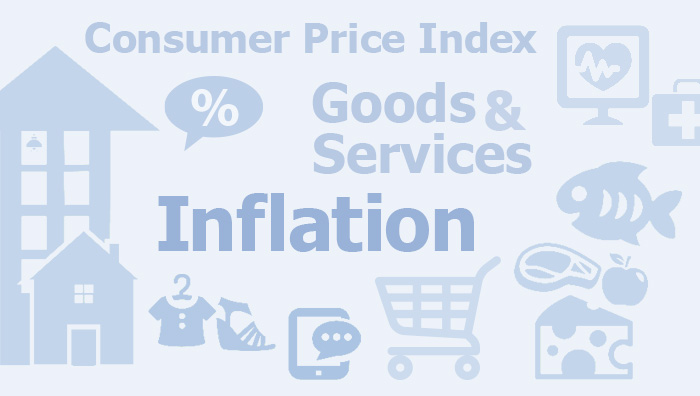January 2024
- Download the complete Bulletin 5.6MB

Understanding the Post-Pandemic Demand for Australia’s Banknotes
Banknotes can be used to make legitimate payments, but they can also be hoarded, lost or used to facilitate transactions in the shadow economy. Understanding how banknotes are used can assist policymakers in responding to changes in payment behaviour and demand for cash. This article examines the value of banknotes used for each component of cash demand and how it has changed since the COVID-19 pandemic. The share of banknotes used for transactional purposes is estimated to have fallen by 5 percentage points since early 2020, while cash use in the shadow economy has increased slightly and the proportion of banknotes that are lost has remained unchanged. Overall, the majority of banknotes on issue are currently used for non-transactional purposes, consistent with pre-pandemic trends.

Developments in Income and Consumption Across Household Groups
Data on spending by income and mortgagor status suggest that growth in consumption has slowed significantly over the past year or so across most household groups as cost-of-living pressures have weighed on household finances. High inflation has decreased the purchasing power of all households and has had a relatively similar effect on real disposable incomes across different groups. While higher interest rates have also weighed heavily on the incomes of mortgagor households, many of these households have larger financial buffers, which have helped to offset the aggregate impact of interest rates on their spending so far. Resilient growth in nominal incomes has helped to support the spending of many lower income households and renters. Nonetheless, many of these households have lower financial buffers and so increases in their cost of living are more likely to have caused financial stress with all its adverse impacts on their wellbeing. Indeed, many households are experiencing acute challenges in the face of high inflation and higher interest rates. This article explores these recent developments in consumption across household groups.

Inflation Expectations and Economic Literacy
The level of community awareness and understanding of basic economic issues can influence a central bank’s ability to achieve its goals, such as by anchoring the public’s inflation expectations in line with its inflation target. This article draws on novel data from a large-scale survey of Australian adults about their knowledge of the Reserve Bank’s inflation target and their expectations for inflation over the short and medium term. Responses to these questions varied significantly according to the socio-demographic characteristics of the survey respondents and their level of economic literacy. The results of this study point to the need for clear communication about the Bank’s inflation objectives that caters for variations in awareness and understanding of economic issues across different socio-demographic groups.

What Do Firms Tell Us About the Inflation Outlook?
The Reserve Bank’s liaison program collects information from firms in Australia about current economic conditions and their expectations for future conditions, including their own prices. Firms’ observations provide a timely read on inflation. Over the past six months, firms have generally expected their prices growth to continue to moderate, but on average to remain above the Bank’s inflation target range of 2–3 per cent. Firms have reported that large cost increases over recent years are still flowing through to some parts of the supply chain and have indicated that this is the primary driver of their decisions to increase prices at a faster-than-normal rate. Slower growth in demand and increased competition are expected to result in a further slowing in growth of firms’ prices over coming quarters.

Bank Fees in Australia
This article updates Reserve Bank research on bank fees charged to Australian households, businesses and government. Over the year to June 2023, total fees charged by banks fell by around 4 per cent. Fees comprised just 5 per cent of banks’ total revenue over the period, while over 50 per cent came from interest earnings on loans. By customer, most fees were paid by large businesses, as was the case in previous years. However, fee earnings from businesses and government declined over 2022/23, in part reflecting lower merchant services fees. On the other hand, fee income from households increased, driven by higher revenue from charges on credit cards related to international travel and increased revenue from break fees on term deposits.

The Committed Liquidity Facility: 2015–2022
The Reserve Bank’s Committed Liquidity Facility (CLF) was used from 2015–2022 to enhance the resilience of the banking system to times of liquidity stress. Banks must hold high-quality liquid assets (HQLA), including government securities, as a buffer against liquidity stress. Historically, the low level of government debt in Australia limited the amount that banks could reasonably hold, and so the CLF was introduced in 2015 as an alternative. Over time, however, the amount of government debt on issue and system liquidity increased significantly due to fiscal and monetary policy measures implemented to support the Australian economy during the COVID-19 pandemic. In response to this significant increase in HQLA, the size of the CLF was gradually reduced so that it was no longer in use at the beginning of 2023. This article provides an overview of the CLF and discusses its introduction and why it is no longer in use.

Recent Developments in the Semi-government Bond Market
The market for Australian state and territory government bonds is often referred to as the market for ‘semis’. Semi-government bonds are a key source of government funding and they form an important share of high-quality liquid assets in the Australian financial system. The COVID-19 pandemic, and state and territory government policies implemented in response, increased the size of the semi-government bond market significantly. During this period, there have also been compositional changes in the types of issuance and investors of semis. This article explores recent trends in the issuance, ownership and pricing of semi-government bonds.
Some graphs in this publication were generated using Mathematica.
ISSN 1837-7211
